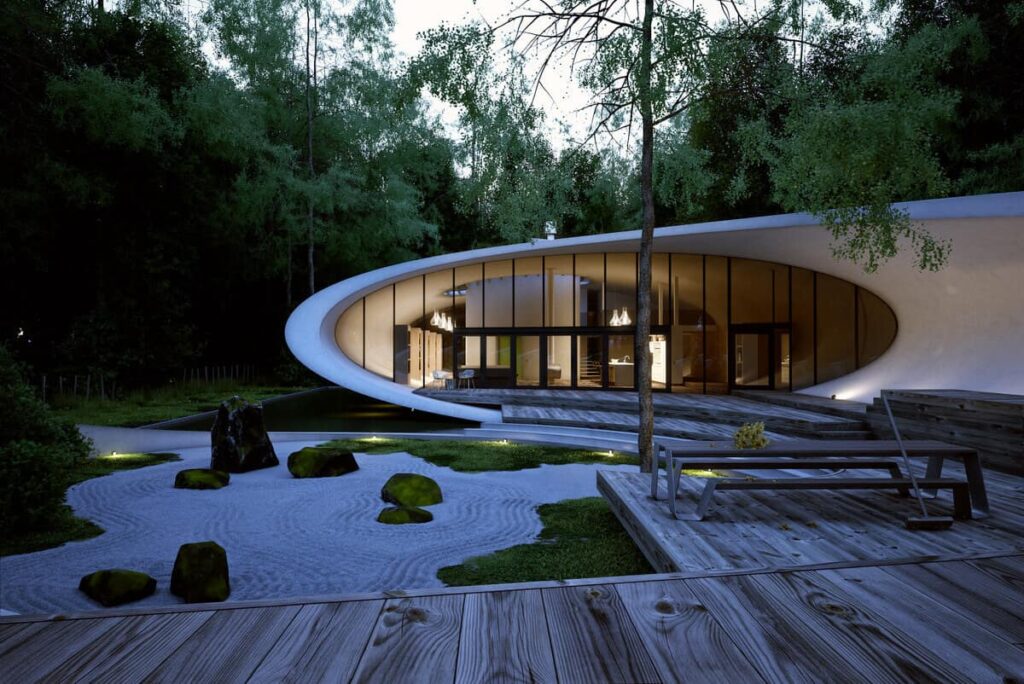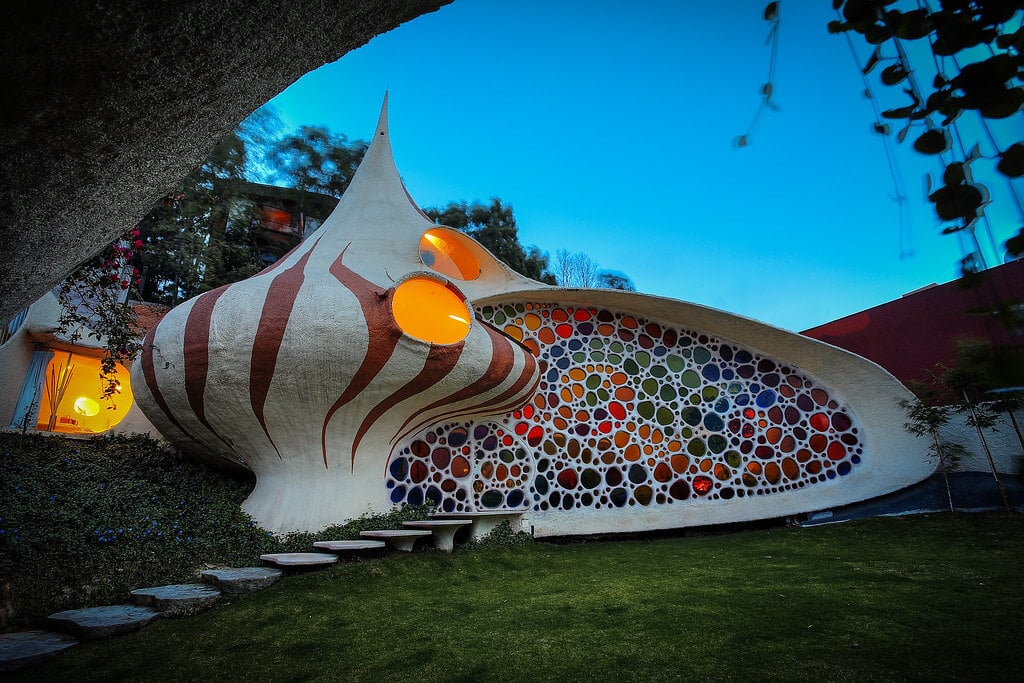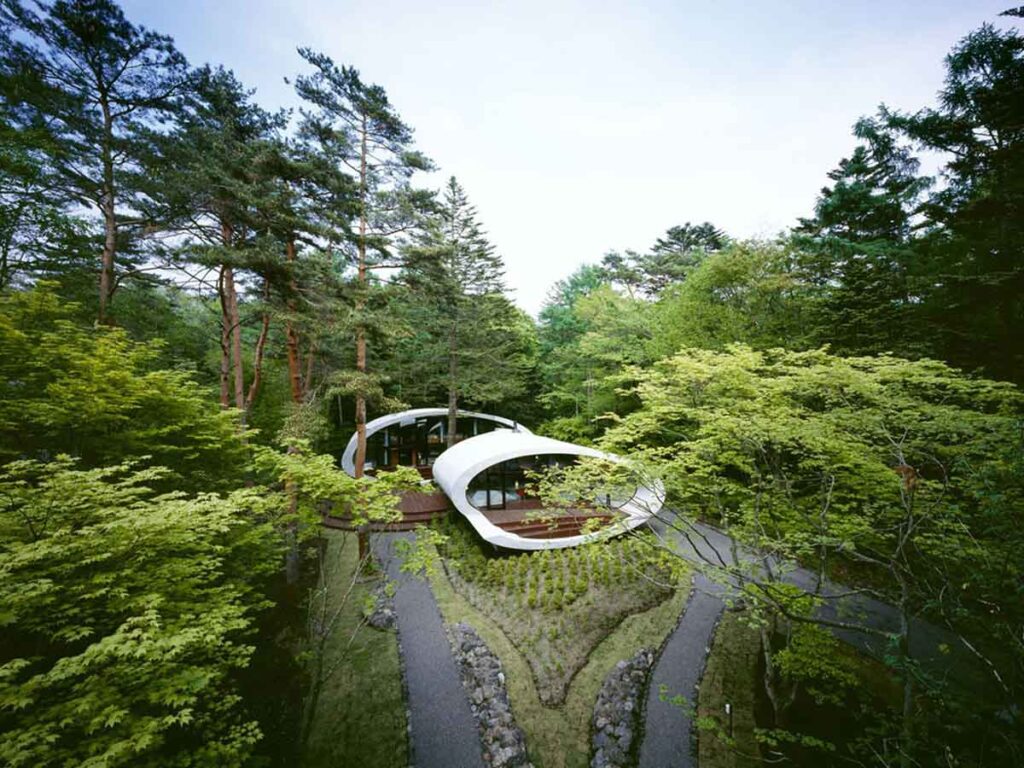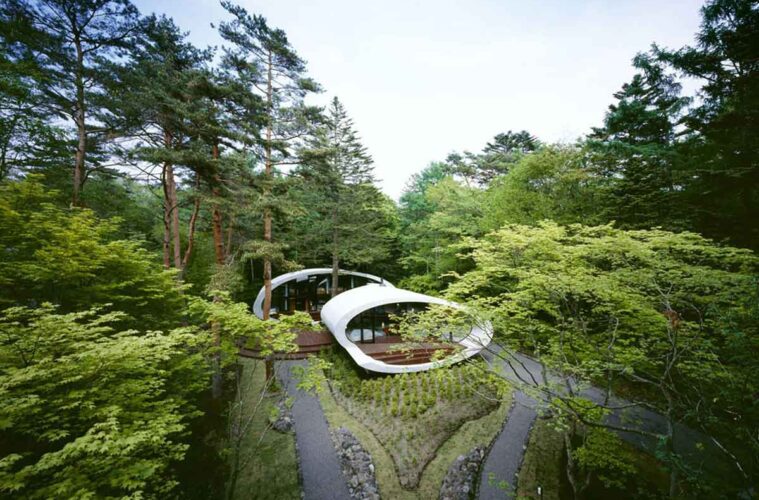The term organic design is used to describe a style of architecture that is based on natural shapes and forms. Organic architecture takes its inspiration from the natural world, in particular from the forms found in plants and animals.
This type of architecture can be seen in buildings such as The Crystal Palace, which was built for the Great Exhibition of 1851 in London. Can you believe it, it was actually inspired by a giant water-lily? Queen Victoria knighted his designer, Joseph Paxton, for his services. “Nature was the engineer,” he said. “Nature had provided the leaf with longitudinal and transverse girders and supports that I, borrowing from it.”
Another great example is the Sydney Opera House in Australia, whose architect, Jørn Utzon, was deeply influenced by natural shapes in his approach to design this building that changed the identity of a land and therefore even became the symbol of Australia.
History of Organic Design in Architecture

source: pinterest.com
Organic design has been around for a long time. In a simple way, even as long as human exists, when they build their homes out of natural materials like earth imitating natural shapes. In a more sophisticated way, it became popular after World War II when people started to promote the idea that buildings should be integrated with nature rather than fighting against it.
Organic design is a natural and sustainable approach to architecture. It’s about designing buildings that are in harmony with nature and the environment.
The idea behind organic design is to create spaces that are in harmony with nature and the environment, where man and nature co-exist. This type of design is also known as biophilic design because it incorporates elements from nature into the architecture.
What are the Benefits of Organic Design in Architecture?
Biophilic design is a design approach that considers the human need for contact with nature. It is a type of architecture that aims to create a connection between the human and their natural environment.
The benefits of organic design in architecture are plentiful. The most important thing about this approach is that it creates an environment that is comfortable and relaxing for the occupants, which can lead to increased productivity and creativity.
Another aspect is the saving of energy. By studying and imitating some homes of the natural world, for example from termites, ants etc., engineers were able to save on costs for air conditioning or heating.
How to Add Organic Elements in the Home to Create an Environment of Balance & Harmony

source: pinterest.com
Not everybody is an architect or starting the venture of building their own house. Nevertheless, there is something everybody can do to add some nature into your home. For example, with a few interior design tweaks.
There are many ways to add organic elements in the home. It can be as simple as adding a few plants to your room, or as complex as designing your living room with natural and organic shapes.
Organic shapes and textures are an excellent way to bring nature into the home. They can provide a sense of balance and harmony within the space. Using organic shapes in design will help you create a space that is both beautiful and comfortable.
Organic Design = Sustainable Building Techniques
Organic design is a term used to describe the use of natural materials and sustainable building techniques that are in harmony with the environment. Unlike traditional buildings that are made from steel, concrete, and other non-renewable resources, organic architecture uses renewable materials like wood and stone.
The benefits of organic design include energy conservation, reduced environmental impact (less pollution), lower construction costs (less expensive building materials), increased comfort for occupants (natural light and air), improved aesthetics (natural materials), and improved health for occupants (better air quality).
The Benefits of an Organic Approach to Urban Planning and Designing Sustainable Communities

source: pinterest.com
Urban planning is a process that is often overlooked in the design of sustainable communities. With an organic approach to urban planning, sustainability becomes an integral part of the design process.
The benefits of an organic approach to urban planning are numerous. One benefit is that it can be more inclusive and democratic. Another benefit is that it can encourage innovation and creativity, which are essential for any successful community.
Start Creating Organic Architecture
It is not a secret that organic shapes in architecture are becoming more and more popular. They are not only stylish but also environmentally friendly.
If you are an architect or engineer, please never stop suggesting this unique style to your clients. It might not become a symbol to identify a whole country, like the Sydney Opera House, but it will certainly stand out in a very positive way.
Who knows, maybe in the future there will be many apartment blocks for sale that are inspired by organic shapes, just like “La Pedrera (Casa Mila)” from Antoni Gaudi. Although organic architecture in residential buildings is rare nowadays it doesn’t mean it is impossible. Those kind of homes – due to their uniqueness – usually go for a lot of money. The only challenge might be to find the right architect/engineer and builder who can really pull it off.
Organic Design, the Architecture of the Future

source: pinterest.com
There is no doubt, the architecture of the future will be more sustainable and eco-friendlier. This is because people are becoming more aware of the environment and the effect that our buildings have on it.
The organic design is a whole new way of designing buildings. It has been around for a while but now it’s starting to become popular again. It’s about looking at what we see in nature and then trying to recreate those shapes and forms in our buildings and homes.
It emphasizes on using natural shapes, such as circles and curves rather than right angles and straight lines. The organic design also focuses on using materials that are not only sustainable but also recyclable or biodegradable.
Just like the wonderful creations of nature, it is limitless in its design.


